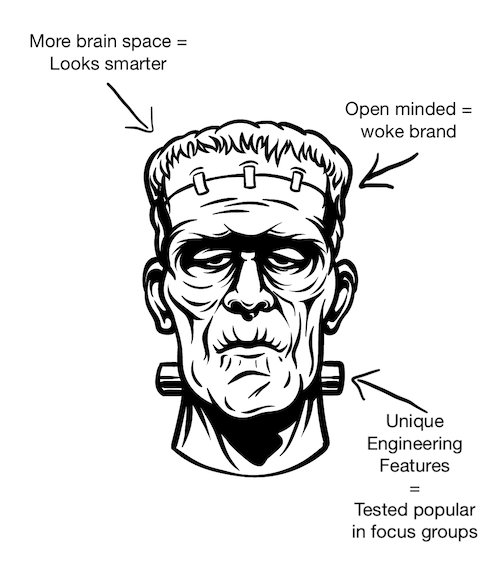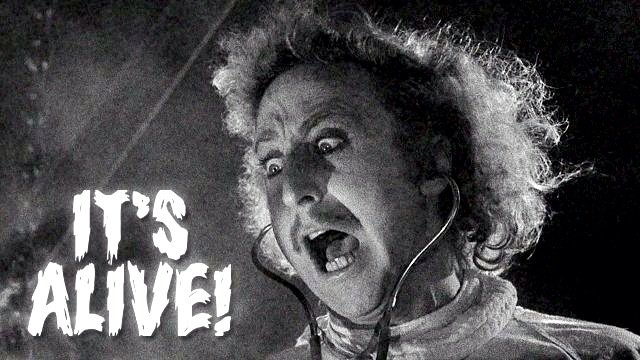What Frankenstein Taught Me About Advertising
About creations, abominations & evolutionary healthy brands
A business becomes a brand in a mad science project when weirdoes with wild hair blow life into an inanimate concept — and give the business a voice, a personality, and meaning beyond mere transactional economy.
Or it grows into one on its own — wild, uncontrolled, and possibly grotesque.
The brand is a monster trying to speak and act like a human — or at least an evolutionary healthy organism — without being met by pitchforks and torches.
Algorithms and bots — much like consultants and Power KPI fetishists — have a tendency to add bolts and screws where they stick out. And build prolonged appendages that make sense in a spreadsheet but look monstrous to consumers.
Design by committee
The human brain is hardwired to judge signals as coherent vs. detached, safe vs. dangerous.
That’s why it’s easy to spot advertising written by commission:
You hear too many voices from one source. Too many different metaphors, shifting PoVs, and contrasting idiolects. It’s a cacophony that makes the brand sound like Janus, the two-faced god of Roman mythology — or possibly like it’s got Multiple Personality Disorder.
The brand identity and all its communication have to come from a healthy and sustainable concept — or it will sooner or later be revealed as a monster.
The Doctor & the Creature
If you talk about Frankenstein, you can encounter two kinds of nerds:
The kind that’ll say: “Well actually… you mean Frankenstein’s creature. You see, Frankenstein is the doctor.”
It’s a rational and reasonable if slightly rigid kind of nerd.
Then there’s the other kind of nerd. That’s me.
I like to point out that they’re both Frankenstein. That’s kinda the moral of the story.
When the creature becomes sentient, it wants to be recognized. It wants a mate. And it wants a name.
The doctor refuses — he finds it barbaric to recognize the humanity in his own mechanical construction. The doctor’s definition of man is scientifically simplistic and he doesn’t have the empathy to recognize that his creation has significance beyond his limited systems of thinking.
Of course the creature has its father’s last name!
If you deny the creature its name, you fall under the same reductionist reasoning as the doctor.
The same that make up blind belief in data, temporary efficiency models and whatever algorithm has finally reduced creativity to 1s and 0s.
The brand is a living organism — and the creature is called Adam Frankenstein.
Wonder Stands to Reason
You can build a business merely on an opening in the market and understanding neo-classical economics.
But if you build your strategy without remembering its fundamentally human relevance, your brand can end up a patchwork freak.
A strict rationalist might combine the measurably most attractive features from the most beautiful models in the world and create an unbelievably average Frankenstein.
A system optimizer might try to combine features (does it really need all those holes in the head?) and create something even further from the healthy organism it was supposed to portray.
Or it could simply be a committee of conflicting ideas born from logically sound but behaviorally impossible strategy. That feeling when you check all the boxes in the brief — but have created an abomination that will live a short, miserable life before it drowns.
The brand has to act and sound human. Not perfect or rationally optimal. Not as a cacophony of buzzwords and flash. Human.
Because that’s the darn thing about the brand — any brand — whether you like it or not:
It’s alive!




